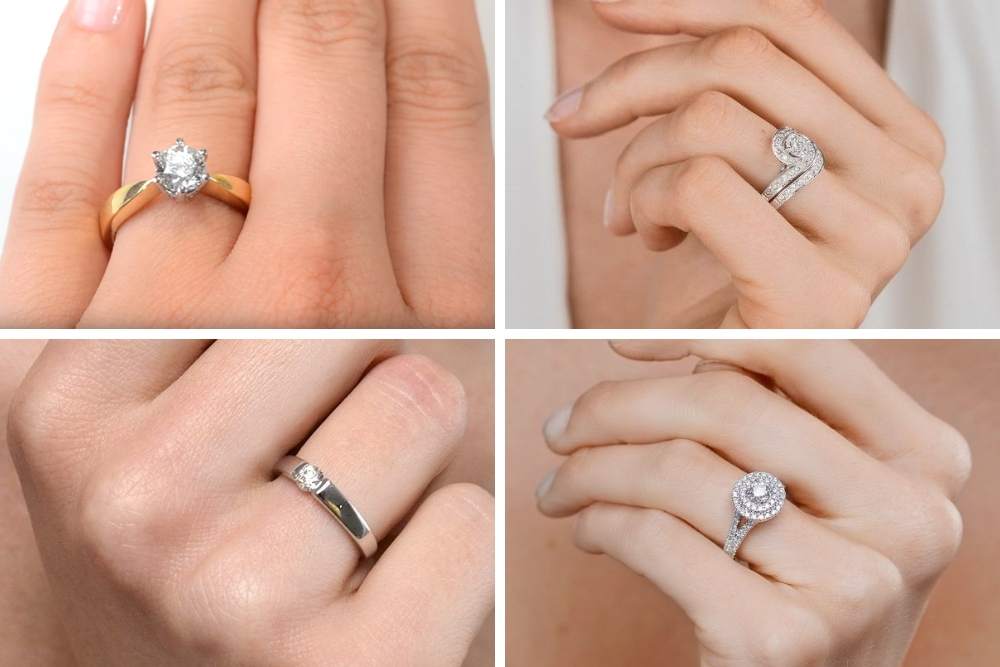When it comes to lab-grown diamond rings, one of the most important components of the setting is the claws. Often overlooked by many buyers, the claws—also known as prongs—play a crucial role in ensuring that the diamond stays securely in place while also showcasing its brilliance. The right setting can elevate the overall appearance of a lab-grown diamond ring, making it not only secure but also visually stunning.
In this article, we will explore the importance of lab grown diamond rings claws, their different types, and how they contribute to the overall aesthetic and security of your diamond ring.
Table of Contents
ToggleWhat Are Claws (Prongs) in a Diamond Setting?
Claws, or prongs, are small metal “fingers” that are used to hold a lab-grown diamond in place within a ring setting. Typically, claws are made from precious metals such as gold, platinum, or white gold, and they are designed to gently grasp the diamond, securing it in place without obstructing the diamond’s beauty.
Claws not only serve the functional purpose of securing the diamond but also affect the overall design and visual appeal of the ring. Depending on the type and number of claws used, they can enhance the sparkle and visibility of the diamond, allowing more light to pass through the stone for added brilliance.
Why Are Claws Important in Lab-Grown Diamond Rings?
The claws in a lab-grown diamond ring serve multiple purposes, both in terms of security and aesthetics. Here’s why they are so important:
1. Security of the Diamond
The most critical function of claws is to keep the diamond securely attached to the ring. They act as a protective barrier, ensuring that the diamond doesn’t shift or fall out over time. Without claws, a diamond could become loose and even potentially fall out of the setting, especially with daily wear.
While lab-grown diamonds are identical to natural diamonds in terms of their physical properties, they still need to be securely set to avoid any risk of damage. Claws grip the diamond tightly, allowing it to stay in place regardless of how often the ring is worn or exposed to various elements.
2. Enhancing the Beauty of the Diamond
Claws are strategically placed to allow maximum exposure of the diamond, ensuring that light can reflect and refract through the stone, maximizing its brilliance. A well-designed setting with carefully placed claws will allow the diamond to sparkle and shine from all angles, showing off its best qualities.
Since lab-grown diamonds are engineered to have the same optical characteristics as natural diamonds, ensuring they are displayed to their full potential is crucial. The right claw setting lets the diamond’s beauty take center stage without any obstruction, letting light pass freely through the facets.
3. Durability and Longevity
Claws also contribute to the long-lasting durability of a lab-grown diamond ring. By securely holding the diamond in place, they prevent it from becoming loose over time, ensuring the ring remains in perfect condition for years to come. The durability of the claws depends on the quality of the metal used and how well the claws are crafted, which is why choosing a reputable jeweler is key.
Many lab-grown diamond ring designs include claws that are shaped in a way that enhances the overall durability of the setting, ensuring that it withstands everyday wear.
Different Types of Claw Settings
When choosing a lab-grown diamond ring, there are several different types of claw settings to consider. Each type of setting offers its own unique aesthetic and level of security, so it’s important to choose one that best suits your style and needs.
1. Four-Claw Setting
The four-claw setting is one of the most traditional and popular choices for diamond rings. In this setting, four prongs are used to secure the diamond, often placed at the corners of the stone. This setting allows the diamond to be held firmly in place while maximizing its exposure. The four-claw setting is particularly popular for round diamonds but works well with many other shapes as well.
One of the benefits of the four-claw setting is that it offers a classic, timeless look. The open spaces between the prongs also provide excellent visibility and light exposure, enhancing the sparkle of the lab-grown diamond.
2. Six-Claw Setting
The six-claw setting is a more secure option than the four-claw setting, as it uses six prongs to hold the diamond in place. This setting is often chosen for larger diamonds, as the additional claws provide extra security. The six-claw setting offers a slightly more intricate design and adds more symmetry to the overall look of the ring.
A six-claw setting can also be a great choice for those who want added protection for their lab diamonds, particularly if the stone is large or has a high value. It provides enhanced stability while maintaining the beauty and brilliance of the stone.
3. Three-Claw Setting
For those who prefer a more minimalist look, the three-claw setting is an elegant option. With only three prongs, this setting allows for more open space and less metal, giving the diamond a more contemporary and sleek appearance. The three-claw setting is often used for smaller diamonds or when the focus is on showcasing the beauty of the stone rather than the metal setting.
Although it offers less security than the four or six-claw options, the three-claw setting can be an excellent choice for those who appreciate a simple yet stunning design.
4. Bezel Setting (Alternative to Claws)
The bezel setting is an alternative to traditional claws and involves encircling the diamond with a thin metal rim, which holds the stone securely in place. The bezel setting provides more protection to the edges of the diamond, making it a good option for those who lead an active lifestyle or want a more modern, sleek look.
While the bezel setting doesn’t showcase the diamond’s facets in the same way as prongs, it offers enhanced protection for the stone, particularly against chips and scratches.
5. V-Prong Setting
A V-prong setting is a variation of the traditional claw setting, where the prongs are shaped like a “V” around the edges of the diamond. This setting is particularly suited for diamonds with pointed corners, such as princess-cut diamonds. The V-shaped prongs help protect the corners of the diamond from potential damage while still offering a beautiful, exposed look.
This setting is commonly used in lab-grown diamond engagement rings to showcase the diamond’s shape while providing additional security.
Choosing the Right Claw Setting for Your Lab-Grown Diamond
When selecting the right claw setting for your lab-grown diamond ring, there are a few factors to consider:
1. Diamond Shape and Size
The shape and size of your diamond will often determine the type of claw setting that works best. For example, round diamonds typically do well with four- or six-claw settings, while fancy-shaped diamonds like princess cuts or emerald cuts often benefit from a V-prong or bezel setting.
2. Lifestyle and Durability Needs
If you lead an active lifestyle or work with your hands, you may want to opt for a setting that offers maximum security, such as the six-claw or bezel setting. These settings will provide extra protection to your lab-grown diamond and minimize the risk of it becoming loose or damaged.
3. Aesthetic Preferences
Ultimately, your personal style will influence the setting you choose. If you prefer a more classic look, a four-claw setting may be ideal. For a more contemporary feel, the three-claw setting or bezel setting could suit your tastes.
Conclusion: The Role of Claws in Lab-Grown Diamond Rings
Claws are an essential element of lab-grown diamond rings, providing both security and aesthetic appeal. Whether you prefer the classic four-claw setting, the added security of a six-claw design, or the minimalist beauty of a three-claw setting, the prongs play a pivotal role in showcasing your lab-grown diamond while ensuring it stays firmly in place.
Choosing the right claw setting is crucial not only for the safety of your diamond but also for the overall appearance of your ring. With so many options available, you can find a setting that suits your style while ensuring your lab-grown diamond stays secure and brilliant for years to come.

